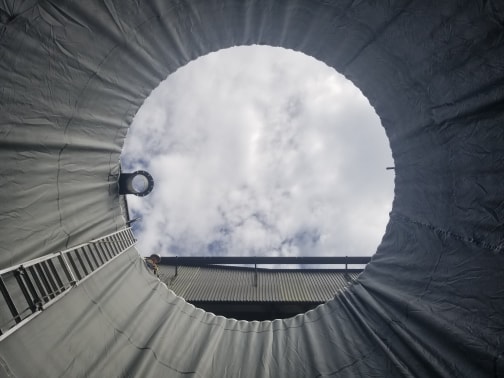
When you think of secondary containment systems for your above-ground storage tanks, a variety of choices is available. To follow the requirements of the state, majority of the systems are created to capture the liquid when it drips from the tank, the same as with double-walled tanks or dikes.
However, Polyvinyl Chloride (PVC) Secondary Containment Liners are different because in the end they become the liquid’s main containment and the tank walls become the secondary containment. Majority of the states permit a system like this provided leak detection is implemented.
It is necessary to check that the PVC matches the liquid to be contained when using a PVC liners system. A PVC liner is suitable for the storage of liquid fertilizer inside a steel-walled tank.
But, according to ATM Tanks (ATM), a method should be used to clean the liner and fill the liquid tank to avoid rupturing the liner. PVC presents a solid material; however, when sharp objects are used it punctures.
Fixing a PVC liner does not just entail inserting the liner inside the tank and topping it up with liquid. Usually, ATM suspends PVC liners from the tank’s top to install it. After this, the liner is fixed inside the tank system with openings for valves, hoses as well as the equipment for leak detection. Provisions are also provided for nozzles and man ways.
ATM states that using PVC liners instead of double-walled tanks or dikes has numerous benefits. Dikes need more real estate around the tank’s circumference which incurs more costs and uses extra space. Also, operational costs are linked to preventing rainwater from the dikes. In many states, it is a requirement that water that is pumped from the dives should be used in agriculture; it raises the operational costs.
Even though double-walled tanks may last longer, it is obvious that they are more costly since they need double steel, compared to one tank. Flexible PVC liners prevent the drawbacks of double-walled tanks and dikes and are a lot more affordable.
The tank’s possible extended life-span is another advantage which is mainly forgotten when PVC liners are used as secondary containment. As the time goes, a steel tank gets damaged and becomes weak along its welds because it is subjected to the stored liquid’s corrosive elements.
As the liner being used works as the primary containment, the liquid stored does not touch the tank’s walls, therefore shielding it from imminent corrosion and prolonging its life.
Lastly, it is much simpler to install a PVC secondary containment compared to setting up a double-walled tank or setting up a lined dike. You can establish most PVC liners in a single day.
Because when you use a flexible PVC liner as a secondary containment system you save a lot of costs and because there are the added advantages of an extended tank life as well as lower operational costs, a PVC tank liner offers a mechanism that is worth consideration for your above-ground storage tanks.
- Identifying and Repairing Common Tank Issues - December 21, 2025
- Why Regular Cleaning of Industrial Tanks is Essential - December 21, 2025
- How to Remove Hard Deposits from Your Water Tank - December 21, 2025






